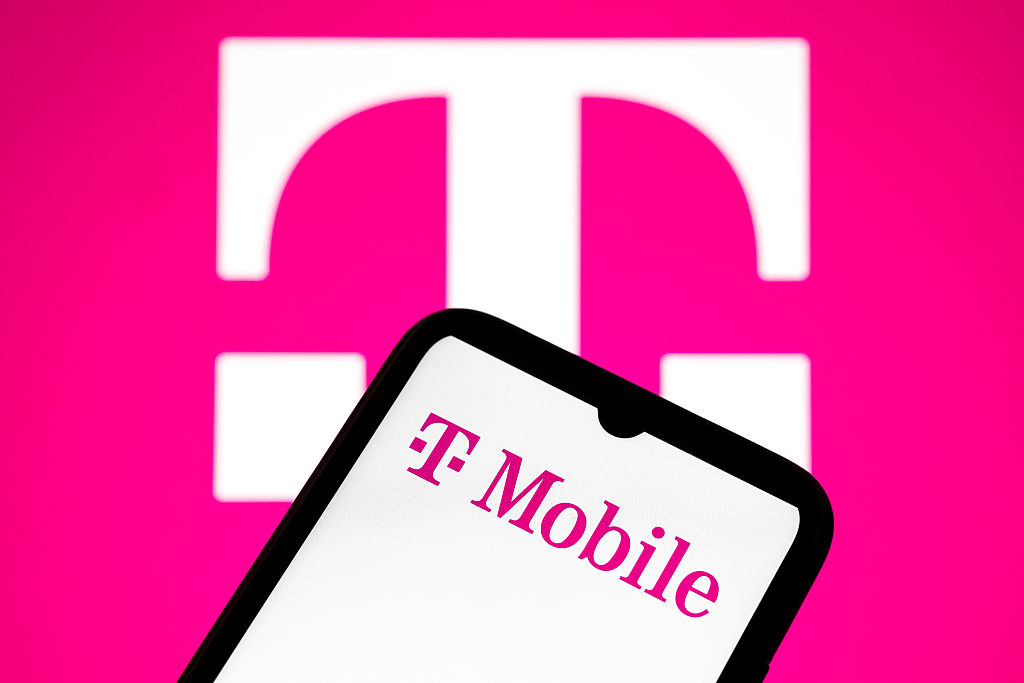Kick Your Retirement Plan into Gear With a Start-To-Finish Checklist
Planning for what could essentially be a 30-year “vacation” sounds daunting, but you can break the process down into four more manageable pieces and tackle them one by one.


One of the hardest jobs for a financial professional is getting people to think about retirement as more than an abstract concept. We all get so caught up in our immediate needs and short-term goals, it’s tough to push past the present.
No one wants to think about getting old, and it doesn’t get any easier when you throw in worries about how you’re going to pay for it. But retirement is inevitable, like it or not. And it’s not as easy or straightforward as it used to be.
In our parents’ generation, a worker would collect a pension, Social Security benefits and maybe tap some savings; go out and buy the Buick he or she always wanted; and a few years later be looking into nursing homes.
From just $107.88 $24.99 for Kiplinger Personal Finance
Become a smarter, better informed investor. Subscribe from just $107.88 $24.99, plus get up to 4 Special Issues

Sign up for Kiplinger’s Free Newsletters
Profit and prosper with the best of expert advice on investing, taxes, retirement, personal finance and more - straight to your e-mail.
Profit and prosper with the best of expert advice - straight to your e-mail.
Now, you could live 30 years or longer in retirement. Most retirees don’t have any kind of pension to count on. And social programs designed to give seniors a boost, such as Medicare and Social Security, likely will be revised in the future.
That means, you need a plan — a solid, written checklist you can use to help make sure you’re thinking of everything, from how you’re spending your money now to where you want it to go when you die. Here are some suggestions on what to include on your list:
Start with your age.
How old are you right now, and how old do you want to be when you retire? For a lot of people, that second number has to be 65; they wouldn’t think of retiring without Medicare in place. Others are ready to go as soon as 62, the earliest age Social Security kicks in — or even sooner. The number is completely up to you, but you should set a goal to get your plan started.
Think about expenses, now and in the future — what you need and what you want.
There’s long been this idea that your cost of living will go way down when you stop working, but that isn’t necessarily true — especially for younger retirees. Some are still carrying debt from their younger years, or they’re helping their kids pay down student loans. They may want to keep doing the things they love — or do the things they never got to when working.
As you age, expenses continue to pop up. You may pay off your mortgage but buy a boat. You may get your kids out of the house but take in your parents. You may move to Florida to avoid state taxes, but shell out money traveling back and forth to visit the friends and family you left behind.
It is important to be realistic: Know yourself and how you want to live. If you’re a school teacher (thank you!) or a production worker and you want to live on the French Riviera, you’d better go buy a lottery ticket. But if you have $1 million saved, with a plan and some parameters, you probably can have a nice life for the rest of your years.
Determine how you’re going to pay for the lifestyle you desire.
This is where things can get really tough. If you aren’t retiring with a pension, you’ll have to create your own stream of income — and then preserve it. Many people don’t have a financial professional while they’re still working — they have a 401(k) account (or two or three, depending on how many employers they’ve had) or an IRA that’s handled by some guy at the bank they meet with once a year — maybe. Your financial professional should take a detailed inventory of all your assets and what they could become over time. Do you have the appropriate amount risk exposure? Does your financial professional even know what your risk tolerance is?
For many years, an annual withdrawal rate of 4% was considered the benchmark for many retirees. That was supposed to provide enough money to maintain your lifestyle without you running out of money. But life expectancy isn’t predictable. Neither is inflation.
Imagine you have $1 million socked away. That seems like a lot. It is a lot. But at 4%, you’re only getting $40,000 a year, and that’s before taxes. Let’s face it: Most people who have saved $1 million don’t live a $40,000-a-year lifestyle. So it’s critical that you have a plan that will cover your needs. That plan should include lifetime income needs as well as downside protection. There are evolved strategies now employed to help achieve both a continuous stream of income for all monthly expenses along with principle protection during any market downturn or serious correction.
Think about the unthinkable.
It’s likely that, at some point, you or your spouse will have some health issues. And even with Medicare, things can get expensive. To take it a step further, if you or your spouse requires long-term care, it could be a significant financial undertaking. There are insurance options that can help you prepare for the worst, so include that on your checklist of things to consider.
You also should decide on your legacy: What you want to leave, who you want to leave it to and how you want them to get that gift. If you’ve avoided thinking about retirement, you’ve surely put this off, but it’s a vital piece of your plan. The most successful competitors picture themselves at the finish line — and you should, too.
David Hickey is a managing director at Your Own Retirement (www.yourownretirement.com) in Cranberry Township, Pennsylvania. He has over 30 years of experience in the insurance and investment industry.
Kim Franke-Folstad contributed to this article.
Investment advisory services offered through AE Wealth Management, LLC. Investing involves risk including the potential loss of principal.
Investing involves risk, including the potential loss of principal. No investment strategy can guarantee a profit or protect against loss in periods of declining values. Any references to protection benefits or guaranteed income generally refer to fixed insurance products, never securities or investment products. Insurance and annuity product guarantees are backed by the financial strength and claims-paying ability of the issuing insurance company.
Profit and prosper with the best of Kiplinger's advice on investing, taxes, retirement, personal finance and much more. Delivered daily. Enter your email in the box and click Sign Me Up.

David Hickey is a managing director at Your Own Retirement in Cranberry Township, Pennsylvania. He has over 30 years of experience in the insurance, finance and investment industry. Hickey has earned the Certified Property and Casualty Underwriting designation from the American Institute. He has a Bachelor of Arts degree in English from the University of Pittsburgh. Hickey has contributed his time to coaching baseball and ice hockey; part and parcel of raising five children with his wife of 31 years, Susan.
-
 The Retirement Donor's Checklist: Key Deadlines by Gift Type
The Retirement Donor's Checklist: Key Deadlines by Gift TypeRetirees have some charitable contribution options that can help avoid spikes in income from RMDS and capital gains.
-
 Cooler Inflation Supports a Relief Rally: Stock Market Today
Cooler Inflation Supports a Relief Rally: Stock Market TodayInvestors, traders and speculators welcome much-better-than-hoped-for core CPI data on top of optimism-renewing AI earnings.
-
 Are T-Mobile's Prepaid Perks a Home Run or a Strikeout?
Are T-Mobile's Prepaid Perks a Home Run or a Strikeout?T-Mobile's prepaid lineup promises MLB.TV, T-Mobile Tuesdays and hotspot data. But do the perks make it worth switching?
-
 5 Smart Things to Do With Your Year-End Bonus, From a Financial Professional
5 Smart Things to Do With Your Year-End Bonus, From a Financial ProfessionalAfter you indulge your urge to splurge on a treat, consider doing adult things with the extra cash, like paying down debt, but also setting up a "fun fund."
-
 Are You a Gen X Investor? Here's How You Can Protect Your Portfolio From an AI Bubble
Are You a Gen X Investor? Here's How You Can Protect Your Portfolio From an AI BubbleAmid talk of an AI bubble, what's the best course of action for investors in their 50s and 60s, whose retirement savings are at risk from major market declines?
-
 Hey, Retirees: Put Your Charitable Gifts in a Donor-Advised Fund (and Enjoy Your Tax Break)
Hey, Retirees: Put Your Charitable Gifts in a Donor-Advised Fund (and Enjoy Your Tax Break)A donor-advised fund is a simple (really!), tax-smart strategy that lets you contribute a large, tax-deductible gift now and then distribute grants over time.
-
 If You're a U.S. Retiree Living in Portugal, Your Tax Plan Needs a Post-NHR Strategy ASAP
If You're a U.S. Retiree Living in Portugal, Your Tax Plan Needs a Post-NHR Strategy ASAPWhen your 10-year Non-Habitual Resident tax break ends, you could see your tax rate soar. Take steps to plan for this change well before the NHR window closes.
-
 Could Target-Date Funds With Built-In Income Guarantees Be the Next Evolution in Retirement Planning?
Could Target-Date Funds With Built-In Income Guarantees Be the Next Evolution in Retirement Planning?With target-date funds falling short on income certainty, retirement plans should integrate guaranteed income solutions. Here is what participants can do.
-
 Your Year-End Tax and Estate Planning Review Just Got Urgent
Your Year-End Tax and Estate Planning Review Just Got UrgentChanging tax rules and falling interest rates mean financial planning is more important than ever as 2025 ends. There's still time to make these five key moves.
-
 Past Performance Is Not Indicative of Your Financial Adviser's Expertise
Past Performance Is Not Indicative of Your Financial Adviser's ExpertiseMany people find a financial adviser by searching online or asking for referrals from friends or family. This can actually end up costing you big-time.
-
 I'm a Financial Planner: If You're Not Doing Roth Conversions, You Need to Read This
I'm a Financial Planner: If You're Not Doing Roth Conversions, You Need to Read ThisRoth conversions and other Roth strategies can be complex, but don't dismiss these tax planning tools outright. They could really work for you and your heirs.